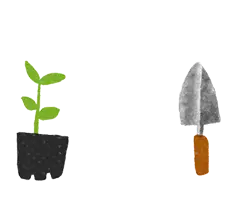Part 2Acquisition of land for public works
Compulsory acquisition of land
27Natural material on land may be acquired or taken for public work
In this section, natural material includes gravel, stone, clay, soil, sand, pumice, and limestone, or other similar material.
Subject to subsection (3), where any work
has been authorised to be carried out and any natural material is required in the construction or maintenance of the work, the Crown or the local authority by its employees, agents, or contractors may, subject to the conditions set out in this section,—- enter during daylight on any land and dig and remove any natural material from it; and
- enter during daylight on any land for the purpose of gaining access to any river or stream, and, subject to the approval of the catchment authority, dig and remove natural material from the river or stream in such manner as will not divert or interrupt the course of the river or stream or damage any building, road, ford, or drain; and
- enter during daylight on any land so as to gain access to other land for any purpose authorised under this section.
Entry shall not be made under subsection (2) without the consent of the owner or occupier, if the land is within the curtilage of a dwelling or other building or is within a stockyard, orchard, vineyard, plant nursery, shelter belt, airstrip, garden, or shrubbery.
No natural material shall be dug or removed under subsection (2)(b) within 50 metres above or below any bridge, dam, or ford without the consent of the person or authority having control over the bridge, dam, or ford.
Before entering on land under subsection (2), a Minister of the Crown or some officer acting on his behalf or the local authority, as the case may be, shall (except in the case of any earthquake, flood, landslide, or other emergency requiring immediate repair to or reconstruction of the work) give to the owner and the occupier of the land not less than 10 working days' notice in writing of the intention to enter and shall include in the notice—
- a description of the land affected; and
- the type of material required; and
- the approximate quantity of material required; and
- the use proposed to be made of the material to be removed; and
- how and when entry is to be made; and
- a statement of the owner or occupier's rights under subsection (6); and
- a statement that the owner or occupier will be entitled to compensation under this Act.
The owner or occupier may, within 10 working days after receiving the notice and after giving notice to the Minister or local authority, as the case may be, of his intention to do so, object to the District Court nearest to the land concerned, and the court may summon the Minister or local authority or his or its representative to appear before the court at a time and place named in the summons.
If it appears to the court that the taking proposed is unreasonable or unnecessary, the court may order that natural material from the land in question shall not be taken, or shall not be taken in the manner proposed; or the court may order that natural material be taken from such land in such manner and to such extent only and subject to such limitations and restrictions as the court thinks fit; and all persons concerned shall be bound by any such order.
Nothing in this section shall derogate from the provisions of Part 3 of the Resource Management Act 1991.
Notes
- Section 27(2): amended, on , by section 9(1) of the Public Works Amendment Act 1988 (1988 No 43).
- Section 27(2): amended, on , by section 2(7) of the Public Works Amendment Act (No 2) 1987 (1987 No 67).
- Section 27(5): amended, on , by section 9(2) of the Public Works Amendment Act 1988 (1988 No 43).
- Section 27(5)(g): substituted, on , by section 9(3) of the Public Works Amendment Act 1988 (1988 No 43).
- Section 27(8): substituted, on , by section 362 of the Resource Management Act 1991 (1991 No 69).
- Section 27(8): amended, on , by section 6 of the Resource Management (Natural and Built Environment and Spatial Planning Repeal and Interim Fast-track Consenting) Act 2023 (2023 No 68).


